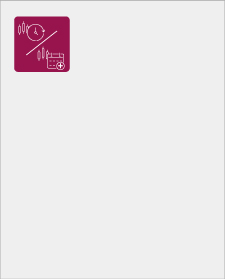
Advantage AxisDirect
- 20 investment products
- 3 great platforms to invest
- 5 fun-tastic learn courses
- 5 powerful research segments
- 4 prestigious awards
- 9 lakh+ happy investors
Quotes
Back To Menu
-
Offerings
- Overview
- Products
- Platforms - RING
- DIGITAX
- Managed Accounts
- Private Client Group
- Business Associates
- NRI
- REFER & EARN
- Insurance
- SGB
- Markets
- Research
- Learn
- PORTFOLIO
- PROFILE
Intraday & Delivery – Find out the Major Differences
Sep 28, 2023

Intraday And Delivery – Major Differences You Need To Know
When it comes to stock trading, understanding the differences between intraday and delivery-based trading is important as it affects the trading strategy, risk profile, and cost structure. It helps investors choose the appropriate approach based on their goals and time horizon. Both terms represent distinct approaches with their own objectives and timeframes. Intraday trading involves buying and selling securities within the same trading day, with traders looking to profit from short-term price fluctuations. On the other hand, delivery-based trading refers to buying and holding securities for an extended period, typically beyond the trading day.
Recognising the differences between delivery and the intraday difference can help you navigate the stock market effectively. This knowledge not only makes you more aware but also empowers you to decide which type of trading strategy aligns with your goals and risk tolerance. Read on to discover where they differ and examine their objectives, timeframes, associated risks, and potential rewards.
Intraday Trading: What Is It?
Purchasing and selling of shares on the same day during market hours is known as intraday trading. As a result, shares won't be held or transferred to an investor’s Demat Account. On the same day, you have the option to buy first and sell at a profit or a loss or sell first and buy at a profit or loss. In some situations, your broker may close your open position automatically for a fee if you don't close it fifteen minutes prior to market closing.
Delivery Trading: What Is It?
In delivery-based trading, you’ll have the flexibility to hold shares for a longer period, without the obligation to buy and sell on the same day. This means you can choose to retain shares based on your preferences and investment goals. The duration of holding shares can range from a few days to weeks or more. This approach takes a long-term perspective and can potentially benefit you from the growth and performance of your investments over an extended period.
Key Differences between Delivery Trading and Intraday Trading
● Stock Type
There are typically two categories of stocks: illiquid and liquid. Liquid stocks are highly traded, with significant trading volumes and tight bid-ask spreads. On the other hand, illiquid stocks have low trading volumes and wider bid-ask spreads, making them harder to buy or sell. Since the volume of liquid stocks is significantly higher than that of illiquid stocks, intraday traders typically favour them. You will be able to purchase and sell these shares whenever you want because of the large trading volumes involved. However, delivery traders might participate in both liquid and illiquid equities. For example, some investors invest in penny stocks in anticipation that the price will increase and they will gain significant returns.
● Risk
In delivery trading, you can hold stocks for a longer period, which can expose you to potential market fluctuations and overnight risks. Whereas, in intraday trading, you might face risk due to the short-term nature of the trades. While both approaches entail risks, delivery trading offers more stability and the opportunity for long-term growth, while intraday trading requires quick decision-making and the ability to handle short-term market fluctuations.
● Time
Intraday trading comes with a time limit – you have to buy and sell within the same day. It requires your full attention, as losing focus could result in the broker automatically selling your positions and charging you a fee. On the other hand, with delivery trading, there are no time restrictions. You have the freedom to sell your shares whenever you choose, depending on your investment timeframe. This flexibility allows you to align your selling decisions with your long-term investment goals.
● Short Selling
Short selling is another feature that sets the two apart. You can sell shares you don't own during intraday trading, which is a benefit. For instance, you can borrow stocks from a broker, sell them at the current market price, and aim to buy them back later at a lower price, returning them to the broker and profiting from the price difference. In this manner, you can profit even if the price of an investment is declining. To take this up, though, you might need some day trading expertise, as there are risks involved. Try to start small before going big. This feature is not available in delivery trading mode.
● Margin
Brokers commonly provide intraday traders with large leverage or margin. You can purchase more shares using the leverage option than your account balance allows. For instance, if your broker offers a 5x margin and your account balance is Rs 10,000, you can purchase shares for Rs 50,000. However, the lender might charge a fee for offering the margin facility.
In Delivery trades, you can only buy shares if your account has enough money to support the purchase.
Conclusion
Understanding the major differences between delivery and intraday trading is crucial for investors looking to do well in the stock market. With Axis Direct, you can trade both over a comprehensive platform that will cater to your unique needs as an investor. With robust trading tools and ready support, you’ll be empowered to make informed decisions, leverage market opportunities, and attune your trading strategies to your financial goals. All this and more in just one place: Axis Direct 3-IN-1.
Related Keyword
Investing
Bonds
Equity Market
Equity
Similar Articles
Show more...




 India
India NRI
NRI





